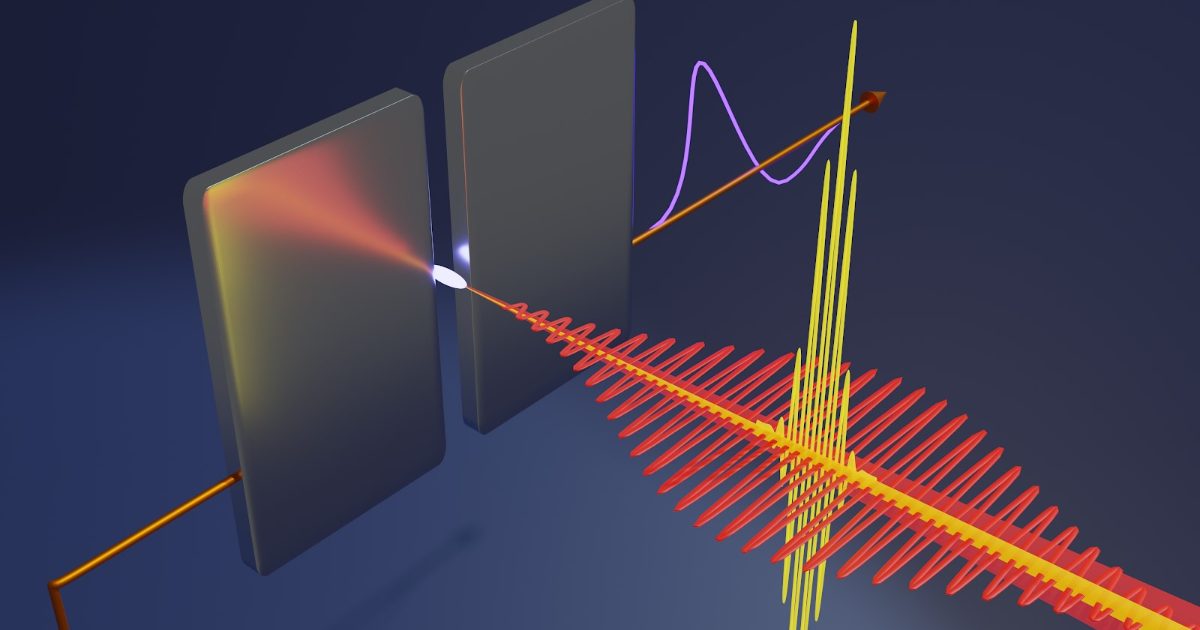Oct 19 2020
Researchers at the University of Ottawa have developed a new technique to quantify the temporal evolution of electric fields with optical frequencies.
 The detection of currents induced in ambient air plasma by a pair of cross-polarized laser pulses is used to sample the electric field of light waves. Image Credit: Aleksey Korobenko.
The detection of currents induced in ambient air plasma by a pair of cross-polarized laser pulses is used to sample the electric field of light waves. Image Credit: Aleksey Korobenko.
The new method works in ambient air and enables the direct measurement of the field waveform. Moreover, it could pave the way for advancements in the field of high-speed electronics.
Aleksey Korobenko, a postdoctoral fellow from the Department of Physics at the University of Ottawa, and lead author of the study titled “Femtosecond streaking in ambient air”, published recently in the Optica journal, offered more details about the research.
About the Research Project
The aim of our project is to resolve the electric field oscillations in a light pulse. This allows one to control the motion of electrons in quantum systems on shortest time scales and may lead to important applications such as petahertz electronics—that are a million times faster than typical modern processors.
Aleksey Korobenko, Postdoctoral Fellow, Department of Physics, University of Ottawa
A measurement such as this was first realized with the help of a technique known as attosecond streaking, which is a generalized version of the well-known traditional streak camera.
Irradiation with a short electromagnetic pulse makes the gas molecules to lose their electrons that continue their motion. Thus, the electrons experience the pull from the field of a second, “streaking,” pulse. By measuring the velocity achieved by the electrons because of this pull, the streaking pulse can be reconstructed on attosecond time scales.
What was the discovery?
In our work we demonstrated that instead of measuring the velocities of individual electrons in low-density gas samples, which requires high vacuum conditions and/or a complicated setup, one can simply measure the current induced in air plasma under ambient conditions. We probe this current using a pair of metal electrodes. which facilitates a much simpler and faster measurement of a light wave oscillation.
Aleksey Korobenko, Postdoctoral Fellow, Department of Physics, University of Ottawa
Why is it Significant?
“We can access the time scales of the optical field oscillations in an inexpensive, fast, and robust way. Owing to its simplicity, our method can become a useful tool for the ultrashort lasers research community, aiding the development of a next-generation petahertz electronics,” noted Korobenko.
How was the Research Conducted?
The experiments were carried out using a unique, state-of-the-art, high-power laser generating ultrashort pulses from the visible to the infrared spectrum. Performing a measurement of these pulses under different experimental conditions, we benchmarked our method against the established measurement techniques.
Aleksey Korobenko, Postdoctoral Fellow, Department of Physics, University of Ottawa
Additional Details
This research is an international collaboration with scientists from the Max-Planck Institute for Quantum Optics in Germany, the Ludwig-Maximilian University of Munich, and the Joint Attosecond Science Lab (NRC and uOttawa). Scientists from Russia, Canada, America, Germany, France, Iran, and China took part in the project.
The study was performed in the Joint Attosecond Science Laboratory, which is jointly run by the National Research Council and the University of Ottawa.
Journal Reference:
Korobenko, A., et al. (2020) Femtosecond streaking in ambient air. Optica. doi.org/10.1364/OPTICA.398846.